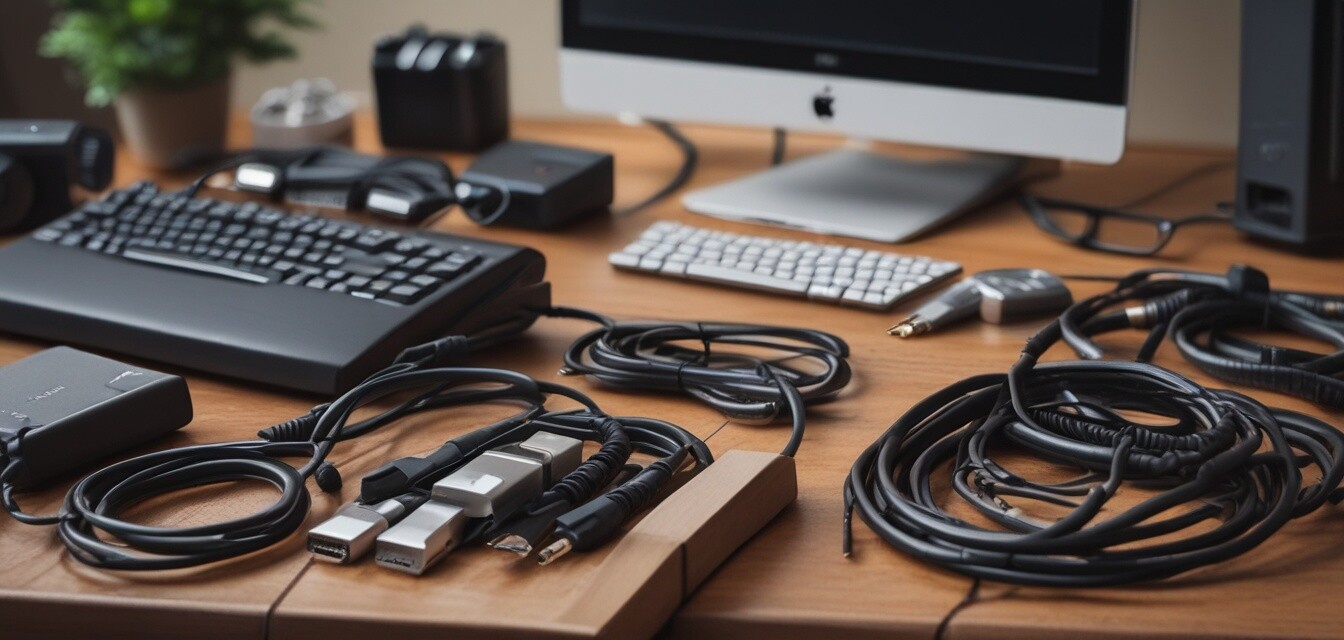
The Must-Have Cables and Adapters for Your Office Setup
Key Takeaways
- High-quality cables and adapters enhance connectivity.
- Consider different types based on your setup needs.
- Ensure compatibility with devices to maximize performance.
In today's digital world, having a well-equipped home office is essential for efficiency and productivity. While many focus on ergonomic furniture and cutting-edge technology, the importance of high-quality cables and adapters often gets overlooked. This guide will cover the must-have cables and adapters you need to ensure connectivity and functionality in your home office setup.
Understanding Your Office Setup Needs
Before choosing cables and adapters, take inventory of your devices. Do you have a multi-monitor setup? Will you need to connect various peripherals simultaneously? Understanding your requirements will help guide your purchasing decisions. Below are some common devices found in a home office setup:
| Device | Common Connections |
|---|---|
| Monitors | HDMI, DisplayPort, VGA |
| Printers | USB, Ethernet |
| External Hard Drives | USB-C, USB 3.0 |
| Networking Devices | Ethernet, Fiber |
Essential Cables for Your Home Office
1. HDMI Cables
HDMI cables are vital for connecting your monitors to your computer. They carry both video and audio signals, making them a top choice for multimedia applications. In multi-monitor setups, ensure you have enough HDMI cables to connect all displays.
2. USB Cables
USB cables come in various forms, such as USB-A and USB-C. These cables are used for connecting peripherals like keyboards, mice, and external drives. Consider the speed of data transfer and compatibility with your devices when selecting USB cables.
3. Ethernet Cables
For stable internet connectivity, Ethernet cables are a must. A wired connection is often faster and more reliable than Wi-Fi, especially for activities such as video conferencing and streaming.
4. Power Cables
Power cables are essential for nearly all devices. Make sure you have suitable power cables for your computer, monitors, and any other peripherals that require direct power connections.
5. DisplayPort Cables
If your monitors support DisplayPort, consider using these cables for high-resolution displays. They can often handle higher refresh rates and resolutions than HDMI cables.
Adapters: Bridging the Connectivity Gap
Sometimes, cables alone might not fulfill your connectivity needs. Adapters play a critical role in ensuring devices can communicate effectively. Here are some important adapters you should consider for your office setup:
1. USB to HDMI Adapter
This adapter allows you to connect a monitor through a USB port, especially useful for laptops with limited HDMI ports.
2. USB-C to USB Adapter
Use this adapter to connect older USB devices to newer USB-C ports, ensuring compatibility across different devices.
3. HDMI to VGA Adapter
This is ideal for connecting a modern laptop to older projectors and monitors that only have VGA inputs.
4. Ethernet to USB Adapter
Essential for laptops that lack an Ethernet port, this adapter allows you to connect to wired networks easily.
5. Multi-port USB Hub
If you have multiple USB devices, a multi-port USB hub can expand a single USB port into many, reducing clutter and enhancing accessibility.
Choosing the Right Cables and Adapters
When picking cables and adapters, consider the following factors:
- Length: Ensure the cables are long enough for your setup without excessive slack.
- Durability: Look for cables with good build quality to withstand regular use.
- Compatibility: Check if the cables and adapters are compatible with your specific devices.
- Brand Reputation: Opt for brands with positive reviews for reliability and customer support.
Conclusion
Investing in the right cables and adapters is crucial for building a seamless and efficient home office setup. Ensuring optimal connectivity through high-quality accessories will enhance your productivity and overall work experience. For more tips on enhancing your workspace, check out our other resources on buying guides or explore our listings for computer peripherals.
Pros
- Improved connectivity and efficiency
- Wide variety of options for different needs
- Enhances overall workspace productivity
Cons
- Potential for cable clutter
- Incompatibility issues with older devices
- Initial setup can be cumbersome